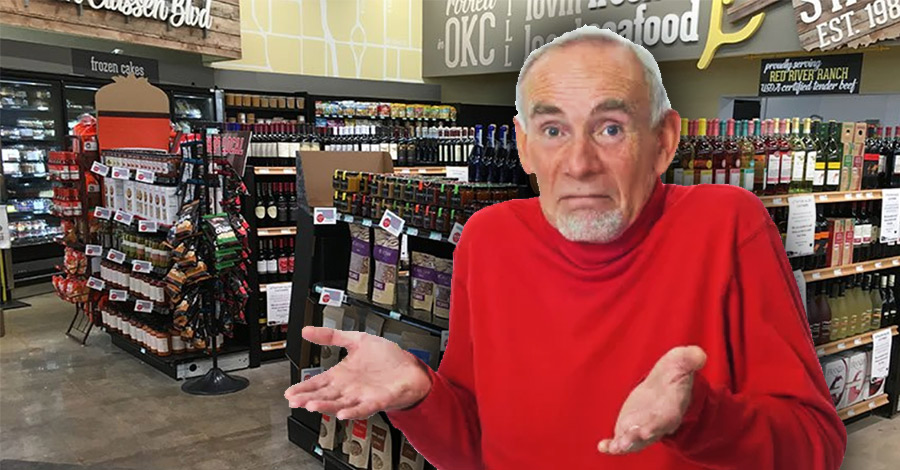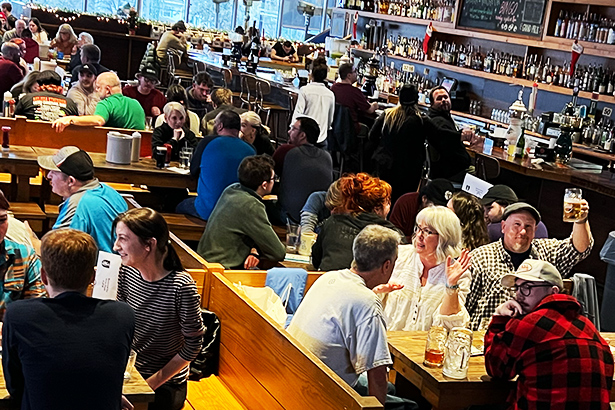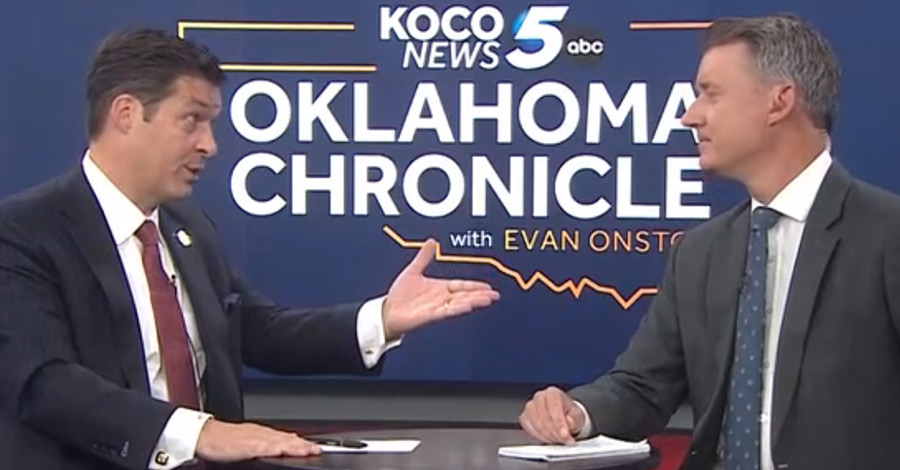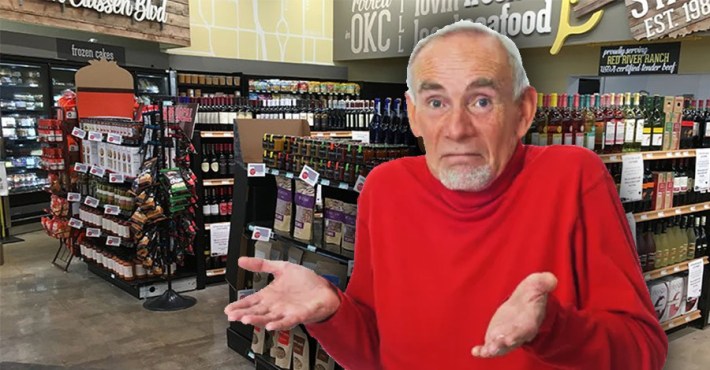
The times, they are a’changin’. Perhaps you’ve noticed your local grocery store adding shelves lined neatly with bottles and boxes of wine (not to mention gas station coolers emptied of beer). Maybe your local liquor store has already installed a wall of glowing refrigeration units.
Yes, October 1, 2018 is quickly approaching. In less than a week, you will be able to pick up a Bota box and sixer of Ogletoberfest while filling up the gas tank or grocery cart. Pretty awesome, right?
Well, maybe.
As we inch closer and closer to October 1st, there's some panic stirring behind the scenes. Liquor stores are going out of business. Distributors are raising prices. Bars and retailers are having a hellish time getting staple products. And this may just be the beginning. A multi-billion dollar economy that employs tens of thousands of people is about to be thrown for a spin, and nobody is too sure where it will land.
That's why I've spent the last month speaking to industry professionals, liquor store owners, distribution representatives, and local breweries – some of the different sectors of Oklahoma's alcohol industry – to see how they'll be affected by the new law.
We'll begin by taking a look at:
The Winners
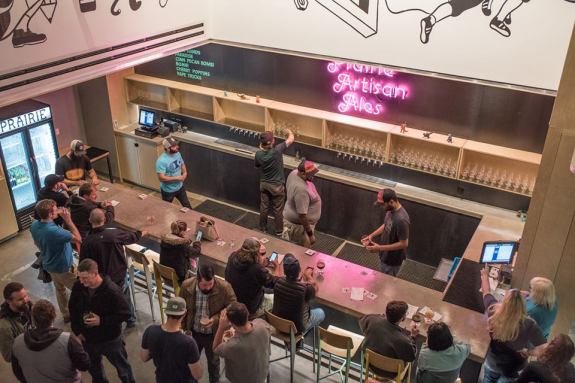
It's hard to believe that just 10 years ago, the primary, if not only, brewery in this state was Choc. Since then, the industry has blown up with a brewery at every corner. Now, you'll see your favorite beers in your favorite gas station or grocery store. That is, if the big cats will let them:
Check out the “suggestions” big beer gave to local liquor stores about how to stock new cold sets. The little sliver up top is all the local craft they think is needed. Anyone want to claim big beer doesn’t engage in misinformation? Please let your stores hear your voice. pic.twitter.com/QFAxfjjcZj
— COOPAleWorks (@COOPAleWorks) August 31, 2018
Product visibility aside, Oklahoma brewers are ready for the change.
“Most people think that this is all about access to grocery and convenience stores for breweries,” says Sean Mossman, who is COOP’s director of sales and marketing. “That's great, but what many local brewers will tell you they're most excited about the impact on product quality. COOP will finally have the ability to keep our beer cold through every step of distribution and consumers will enjoy fresher tasting product."
They’ll also have a better shot at increasing revenue at their own taprooms.
In 2016, Senate Bill 424 went into effect, which allowed breweries to serve high-point beer. That was a huge boon, as many small craft breweries across the nation rely on taproom sales for their business model. When the law changes in October, breweries will be legally allowed to keep hours consistent with other bars. As of now, a taproom has to close at 9pm, but they’ll soon be able to stay open as late as 2am.
This is all very good for a growing segment of Oklahoma’s economy. However, it’s very obvious to even people outside the alcohol industry that there are other parties who stand to gain the most. Supermarkets will be reaping in money once they are able to sell these products. After all, if you can get the fresh garlic and basil to make pesto and a cold bottle of sauvignon blanc to pair it with all in the same place, why stop by a liquor store?
Along these lines, most of the big winners will be the massive, out-of-state corporate breweries and wine brands. Stores will be stuffing the aisles with Barefoot, Kendall Jackson, Franzia, etc. I’m not being judgmental here- hell, I spend a lot of my booze bucks on Bota Boxes and Banquet Beers. But be aware that exciting as it may seem to have the freedom to buy these products more easily, don’t expect the local Buy-4-Less to be offering many unique or upscale bottles and cans.
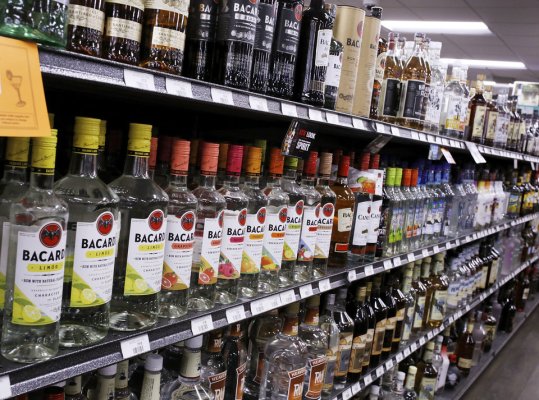
The Losers
When SQ 792 goes into effect, wine and cold high-point beer will be available just about everywhere. We're talking about 3,000 new ABLE licenses going to grocery and convenience stores that will be able to sell all sorts of previously forbidden adult treats.
The 792 ballot initiative won by a cool 400,000 votes, meaning 65% of voters were on board with the changes. The most vocal of that minority who lost consisted of liquor store owners. It's not hard to see why, after all. If you owned a business that was the gatekeeper to a huge industry, and suddenly Wal-Mart could swoop in and sell half your inventory, you'd be pissed too.
For this story, I spoke with two Ogle Moles who own liquor stores. One of the biggest points of contention they both bring up is pricing. It's always been more expensive to drink in Oklahoma than some other states because of our sin taxes and the way alcohol is distributed here.
"My mother-in-law pays several dollars less per bottle of wine at her neighborhood retail liquor store in Santa Fe than I pay wholesale for that same bottle from the distributors in Oklahoma that I am forced by law to use," explains a Mole. "If that doesn’t pinpoint the precise source of greed (Oklahoma liquor distributors) and the reason alcohol is so ridiculously expensive in Oklahoma (Oklahoma liquor distributors), I don’t know what ever could."
Things were already expensive for shops, and many consumers may have noticed prices, especially for liquor, creeping up over the last several months. Don't be surprised, however, when you see very competitive prices in the big box stores when it comes to beer and wine. As another liquor store owner tells us, the larger stores will have more purchasing power to cut cheaper deals with distributors, especially ones like Anheuser-Busch. He also explains that it's typical for these larger brands to cover advertising for in-store sales for those stores to drive more business their way.
"We didn’t fear competition," a Mole says. "We feared unfair competition."
There's a big handful of other advantages grocery stores will win in October. Liquor stores must close by midnight, whereas 7-11 can sell beer until 2 am. Liquor store employees must be 21+, whereas an 18 year-old could sell wine at a Buy-4-Less. Liquor stores still must stay closed on Sundays and certain holidays, but none of that applies to other retailers selling alcohol. This also opens up the door to minors possibly getting their hands on strong alcohol more easily, and although it's a misdemeanor offense for a grocer to get caught doing this, liquor stores can suffer felony charges.
A throwaway consolation was given in 792 to liquor stores where they will be able to sell non-alcoholic merchandise, like mixers or corkscrews. The enthusiasm for this is pretty mixed, as they can legally only make 20% of their sales from such items. "It's an empty concession," a Mole tells me. "My floor space is too valuable, especially when there's a 7-11 nearby." After all, why waste shelf space selling bottles of pasteurized lime juice for a few bucks when you could have a $40 bottle of bourbon there instead? Economically, it's understandable why liquor store owners aren't very excited about that prospect.
And depending on where you live, that $40 bottle of bourbon may go up in price. Previously, distributors were required to sell to every county in Oklahoma at the same price. After October, however, they may change prices county-by-county, which could very possibly have a negative impact on some of the more remote areas of the state.
With such increased availability of alcohol across the state, what role will liquor stores play in the future? Aside from the fact that they'll be the only place you can still purchase high-proof spirits, they must be in the mindset to be looked at as specialty stores. "We have to be proactive, become customer service oriented, and give better suggestions" one Mole explains. "We have to be willing to carry that case of wine out to the customers' car in the rain."
The comments were echoed by the second Mole: "Good liquor stores that know their customers and serve them well will continue to hold their position in the market. We routinely do custom orders for our regulars, help them plan for big parties and give new recommendations, based on what we know they like. Those are not things you will find at a grocery or convenience store."
And for the more particular shoppers, liquor stores will still often be the landing spot for craft beer and unique wines. Even, say, Whole Foods, which is known for its high-end and top-quality products, will still only have a limited amount of space to devote to alcohol. Expect to see a few local beers, a few more Anheuser-Busch owned "craft" beer brands, and whatever 20 wines the regional office is pushing them to sell. While that's convenient while you're doing your grocery shopping, exploratory drinkers will still need to go to their little local shop.

Some were born to sing the blues...
When buying a sixer of beer or enjoying a glass of wine at a restaurant, most of us just think about what we’re enjoying, and not how it got into our hands. Distributors act as the intermediary to make sure we get what we want. They’ve also had to deal with some of the biggest behind-the-scenes changes and hurdles.
First, a quick rundown of how distribution in Oklahoma works: Traditionally, we’ve had a four-tier system, made up of producers (the brewery who made the beer, for example), brokers (who buy from producers to sell to wholesalers), wholesalers (who buy from brokers to sell to retailers), and, obviously, retailers (who buy from wholesalers to sell to you, the consumer). Pretty convoluted, right? The dog ate the cat, the cat ate the rat, the rat ate the cheese, that kind of thing.
The brokers and wholesalers tend to be the whipping boys of the industry. The local service industry groups on Facebook have been rife with complaints lately, along the lines of “My order never came/They outed me on a case of liquor/Why the hell is Jack Daniels so expensive now?”
I interviewed two Ogle Mole distribution representatives to get their side of the story. Both are very experienced and have been in the industry for quite some time, so their insight was helpful. But this is easily the most complicated part of the industry, and even after hearing from them and doing my own research, I’m still confused on a lot of things. But hopefully this helps us all get through it together.
One of the most pressing questions I've been hearing people ask is this: What will happen with pricing? There's a lot going on in the distribution level that could alter what we're used to paying.
"Distributors now have to provide their own trucking, which includes costs of trucks, insurance, additional staff and the maintenance and upkeep with that," a Mole tells me. "In addition, they now have to carry a non-resident seller license and a wholesale license. Now, there are different ways those costs can be split up, but ultimately, those costs will be passed down to the consumer. Additional taxation by the state will also impact costs over time."
However, maybe in the long run we'll see some prices actually drop. "I’m actually seeing a drop in prices in some instances, as much as 10% because new distributors aren’t putting the same markup on products as the big distributors were before," says the other Mole. That being said, they also added: "I think that spirit prices will increase because independent retailers are going to need to make up for lost revenue with beer and wine being allowed in grocery.
This leads to one of the more impactful upcoming changes for distributors. Before, any product brought into the state by one of the brokers had to sell it to any wholesaler who wanted it for the same price. Now, brands can be more picky about who is representing and selling their products. "Non-resident sellers in some way, have more direct access to the market and more control over their product," says a Mole. "The smaller ones may not have as much access to the whole state as in the past, but time will take care of all of this."
This causes a huge headache for retailers. Can't find your favorite bottle on the shelf at your local shop? The brand could have gotten snatched up by a particular distributor, and the shop has no idea who is carrying that product now. Or, the distributor is only dealing with certain areas of the state now. Fans of cult favorites like Blanton's bourbon have already had a difficult enough time finding that delicious whiskey, and it could get worse.
Will we see more or fewer brands in the state because of these changes? This is an issue that only time has an answer for. "The availability of some of the more boutique wineries that we enjoy now is likely to be affected," one Mole speculates. "The issue is mostly with factory and high production brands getting shelf space in grocery, squeezing the small producers out and therefore losing overall sales. This is where independent retailers will hopefully shine, and what will probably be their life jacket."
My other Mole is also not incredibly optimistic on this front. "The registration fees go up on October 1 and many little, boutique brands may not wish to pay the steeper price," he explains. "It has always been expensive to register in this state and with the increased registration and low population, it will be tough for them to remain. In addition, with the advent of so many new locations to purchase focusing on fewer products, I think many small, maybe even established brands, will leave because their sales will decline so much."
Regardless of the selection available, distributors should see a huge boost in their own sales. With about 3,000 new licenses for strong beer and wine sales going out around the state, many of them are hiring for new reps, as well as warehouse and truck driver positions. This seems like it could be an overall positive for the economy, even if there are a few casualties along the way.
With all of this happening behind the scenes, most consumers might only notice things like 3.2% beer running out by the end of the month as the transition happens, or perhaps a few liquor prices changing here and there. It's going to take months to see how all these other unknowns shake out, and don't be shocked if shelves are empty.

What does this mean for the consumer?
Until all of this fallout from 792 settles in the months to come, there seems to be just as many known and unknown factors. Any time an entire economy has to make major shifts, it’s difficult to predict what will happen. Consumer habits will mutate with the times, and businesses will be forced to figure out how to evolve with them.
Let’s itemize the benefits and detriments for most of us, the ones who are the ones just trying to buy the booze:
Pros:
-Increased availability
Obviously, this is the biggest one, and why the bill was written in the first place. No longer will you have to make two stops if you’re just looking to buy your groceries and get a basic bottle of wine or some non-water beer.
-Better quality craft beer
Whether local or from elsewhere, we can count on good beer being kept refrigerated for its lifespan- from brewery to distributor to retail. Many styles of beer, especially hop-driven IPA’s, depend on freshness to retain their flavor and aroma, so keeping it cold will help ensure that we’re getting a better product.
-Longer taproom hours
It’s yet to be seen if many of the breweries will be keeping longer hours. There will be toe-dipping to test how late beer drinkers want to go out. But if I could, say, drop into Prairie’s OKC taproom late at night after I get off work and get a round or two and a growler to take home, that would be really nice.
Cons:
-Fewer liquor stores
Pretty much all of the ‘We’re Right Next Door To a 7-11' liquor stores are already closing, but there could be more on the horizon. Liquor stores will be the only places where we can buy spirits, as well as beer over 9%, so many of us will need to travel further to get our preferred hooch.
-No more low-point beer
I know this is considered a 'Pro' to many people, but man, I really love some good ol’ cheap 3.2% beer. You can drink it all day and never get too out-of-your mind. Plus, it really does taste different. A friend brought over some liquor store Coor’s Banquet the other day, and we were both a little sad because it wasn’t the same easy drankin' yellow bellies that we loved.
-Bigger corporate influence
Anheuser-Busch had a big influence on 792, and it’s brands like that who will reap the biggest profits. Sure, there will be financial improvement for local breweries that will see wider distribution, but the lion’s share of shelf space (and advertisement) at supermarkets will be given to the biggest beer & wine companies.
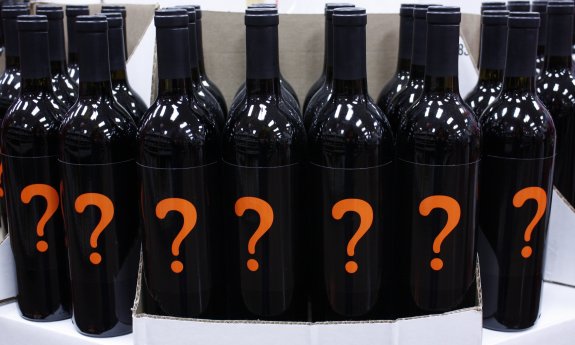
Unknowns:
-Prices
Some alcohol prices could go down, especially with large brands that will be seeing a huge increase in volume in the state. Theoretically, if distributors are able to bring in a zillion more bottles of a popular corporate winery, they’ll catch a better deal, and the prices will drop, especially at supermarkets that have the buying power to sell it like crazy. But at the same time, liquor prices have been creeping up in some instances. It will take a few months to gauge how the costs will trend.
-Selection
Some people told me that more brands will enter the market, now that the brands have more freedom in dealing with who is representing and distributing their products. Other people fear that the opposite will happen, and smaller boutique companies won’t want to deal with all the registration fees and other hoops. There’s been a bonanza of products coming into our state market over the last few years, especially with craft beer, but only time will tell what the market can handle.
-The ‘Unknown Unknowns’
There are plenty of little details that were left out of 792 that were planned on being legislated later. How will this affect street festivals and tailgating? It has always been legal to consume 3.2% beer at public events, and we don’t know how it will be enforced moving on. There are a lot of bars and restaurants that operated selling from low-point beer licenses. Will they be able to easily upgrade to selling strong beer, even if they’re in a close proximity to schools and churches? There’s gotta be a hundred more unknowns like these, and especially queries that won’t be recognized until it’s too late.
To reiterate my feelings from the beginning of this, I still don’t have any regrets about voting ‘yes’ on 792. But the more I’ve learned about what is being changed, the more confused and apprehensive I am about the future. At the end of the day, most other states still have liquor stores coexisting with grocers selling beer and wine, and in the end, everything works out fine there.
You’re doing OK+, Oklahoma.
